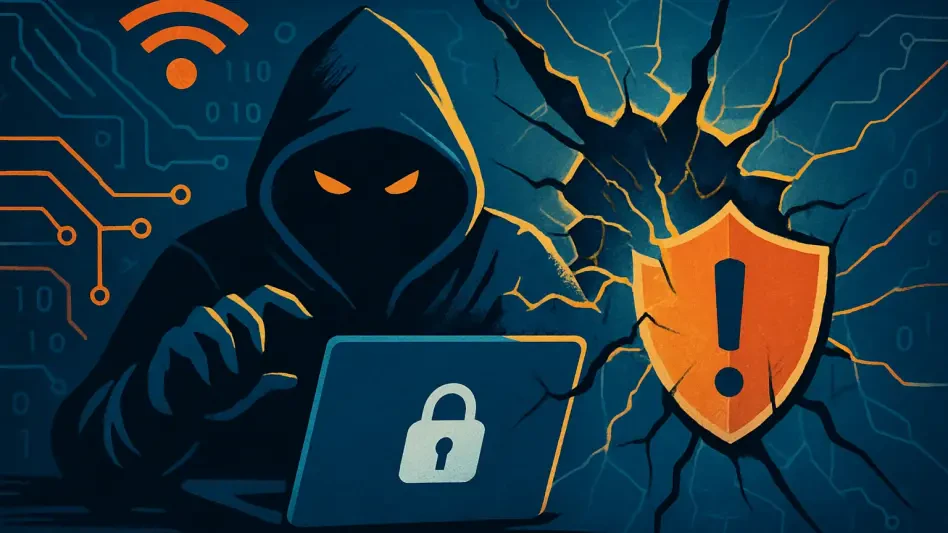In a digital landscape where cyber threats evolve at an alarming pace, a recent warning from the Australian Cyber Security Centre (ACSC) has put organizations on high alert regarding a critical vulnerability in SonicWall products, posing a severe risk to networks across multiple sectors. This flaw, actively exploited by malicious actors, threatens government, healthcare, education, and enterprise environments with potential unauthorized access, data breaches, and ransomware attacks. Identified as CVE-2024-40766 with a CVSS score of 9.3, the vulnerability affects SonicWall firewalls and has already targeted Australian entities, leveraging this weakness to infiltrate systems. The urgency of this issue cannot be overstated, as the ACSC’s alert serves as a critical call to action for organizations to secure their infrastructure against this pressing danger. This situation underscores the importance of proactive cybersecurity measures in safeguarding sensitive data and maintaining trust in digital systems.
1. Critical Vulnerability in SonicWall Products
A deep dive into the specifics of CVE-2024-40766 reveals the gravity of the issue affecting SonicWall firewalls across multiple generations, including Gen 5, Gen 6, and Gen 7 devices running SonicOS version 7.0.1-5035 or earlier. Tracked under advisory ID SNWLID-2024-0015, this improper access control flaw resides in the SonicOS management interface and SSLVPN components. It allows an unauthenticated remote attacker to bypass authentication mechanisms, gaining unauthorized access to sensitive resources. In certain scenarios, exploitation can also cause a denial-of-service condition by crashing the affected device. Given the widespread use of SonicWall products in critical infrastructure and business networks, this vulnerability represents a significant entry point for cybercriminals. The potential for attackers to exploit this flaw and disrupt operations or steal data highlights the need for immediate attention to secure these systems against unauthorized intrusions.
The implications of this vulnerability extend beyond mere access, as it can serve as a gateway for more destructive attacks. Once inside the network, attackers can move laterally, escalating privileges to access critical systems and deploy malicious payloads like ransomware. The ACSC has emphasized that the risk is not theoretical but active, with real-world exploitation already underway. Organizations that fail to address this issue promptly may face severe consequences, including financial losses, reputational damage, and operational downtime. This situation is particularly concerning for sectors handling sensitive data, where a breach could have far-reaching effects on public trust and safety. Both SonicWall and the ACSC have stressed the importance of understanding the technical details of this flaw to implement effective defenses. Identifying affected devices within an organization’s network inventory is a critical first step in mitigating the risks associated with this vulnerability.
2. Active Exploitation by Threat Actors
Recent reports from the ACSC highlight a surge in exploitation attempts targeting CVE-2024-40766, with Australian organizations already falling victim to these attacks. Notably, adversaries linked to the Akira ransomware group have been observed using this vulnerability as an initial access vector to penetrate network perimeters. By exploiting the flaw, attackers establish a foothold, enabling them to navigate through systems, escalate privileges, and ultimately deploy ransomware to encrypt critical data. The Akira group has a documented history of targeting vulnerable network edge devices to bypass traditional defenses and maintain persistent access. This tactic allows them to maximize damage by locking organizations out of their own systems, often demanding hefty ransoms for decryption keys. The immediate threat posed by such groups underscores the urgency of addressing this vulnerability before it leads to catastrophic outcomes.
Beyond the initial breach, the broader impact of these exploitation efforts reveals a troubling trend in cybercrime sophistication. The ACSC has noted multiple intrusion attempts against Australian entities, indicating that threat actors are actively scanning for unpatched SonicWall devices to exploit. These attacks are not random but strategically planned to target organizations with valuable data or critical operations, amplifying the potential for disruption. The ability of attackers to cause both data loss and operational paralysis through ransomware deployment makes this vulnerability a top priority for cybersecurity teams. Furthermore, the risk of lateral movement within compromised networks means that even isolated breaches can quickly escalate into widespread incidents. Organizations must recognize that delayed action could result in prolonged exposure to these threats, making it imperative to respond swiftly to the ACSC’s warnings and secure affected systems against ongoing exploitation.
3. Mitigation Strategies and Recommendations
In response to the active exploitation of CVE-2024-40766, both SonicWall and the ACSC have issued urgent recommendations for organizations to protect their networks. The primary step involves applying the security patches released by SonicWall, which fully address the access control flaw in affected devices. Following patch deployment, resetting all passwords associated with these devices is essential to prevent threat actors from using previously compromised credentials. Failure to update credentials, even after patching, could leave systems vulnerable to re-entry by attackers. This dual approach of patching and credential management forms the foundation of a robust defense against the current threat. Organizations are also encouraged to review their network inventories to identify any unpatched SonicWall firewalls or SSLVPN endpoints that could serve as potential entry points for malicious actors.
Additional protective measures can further strengthen an organization’s security posture against this vulnerability. Monitoring firewall logs for unusual authentication attempts or suspicious connection patterns can help detect exploitation early, allowing for a rapid response. Implementing network segmentation is another critical strategy to limit lateral movement in the event of a breach, confining attackers to isolated segments of the network. Consulting official advisories from SonicWall and the ACSC provides detailed guidance on investigation and remediation processes tailored to this specific threat. By adopting these proactive measures, organizations can significantly reduce the risk of unauthorized access, ransomware deployment, and operational disruptions. The ACSC has emphasized that immediate action on patching and credential updates is crucial in preventing further exploitation, reflecting the high stakes of this cybersecurity challenge.
4. Looking Ahead: Strengthening Cyber Defenses
Reflecting on the response to CVE-2024-40766, it becomes evident that swift intervention by organizations played a pivotal role in curbing the spread of exploitation. The coordinated efforts between SonicWall and the ACSC in issuing patches and advisories provided a clear path for mitigation, which many entities followed to secure their systems. Looking back, the incidents of intrusion attempts by groups like Akira ransomware operators served as a stark reminder of the persistent dangers lurking in unpatched vulnerabilities. The focus on immediate patching and credential resets proved to be effective in halting further unauthorized access for those who acted promptly. This episode highlighted the importance of vigilance and rapid response in the face of evolving cyber threats.
Moving forward, organizations must prioritize building resilient cybersecurity frameworks to prevent similar incidents. Investing in regular system updates, continuous monitoring, and employee training on recognizing potential threats can create a strong line of defense. Exploring advanced threat detection tools and fostering collaboration with industry partners for real-time threat intelligence sharing are also vital steps. Additionally, conducting periodic audits of network infrastructure to identify and address vulnerabilities before exploitation occurs should become standard practice. By adopting these strategies, businesses and institutions can better prepare for future cyber challenges, ensuring that critical data and operations remain protected against increasingly sophisticated adversaries.








